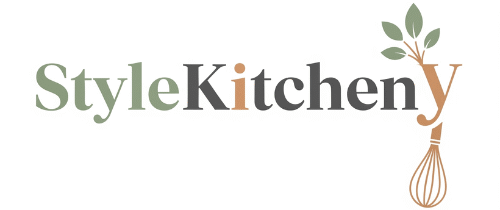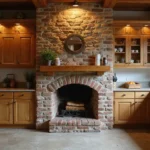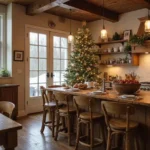Transforming your kitchen into a sustainable haven is easier than you think.
With a little creativity and the right choices, you can create a space that not only looks stunning but is also eco-friendly.
From using reclaimed materials to incorporating energy-efficient appliances, this list is packed with innovative ideas and inspiring visual aesthetics that marry modern design principles with sustainability.
Whether you’re dreaming of a farmhouse-style kitchen or seeking small space styling tips, these kitchen decor ideas will refresh your interiors while being kind to our planet.
1. Reclaimed Wood Cabinets
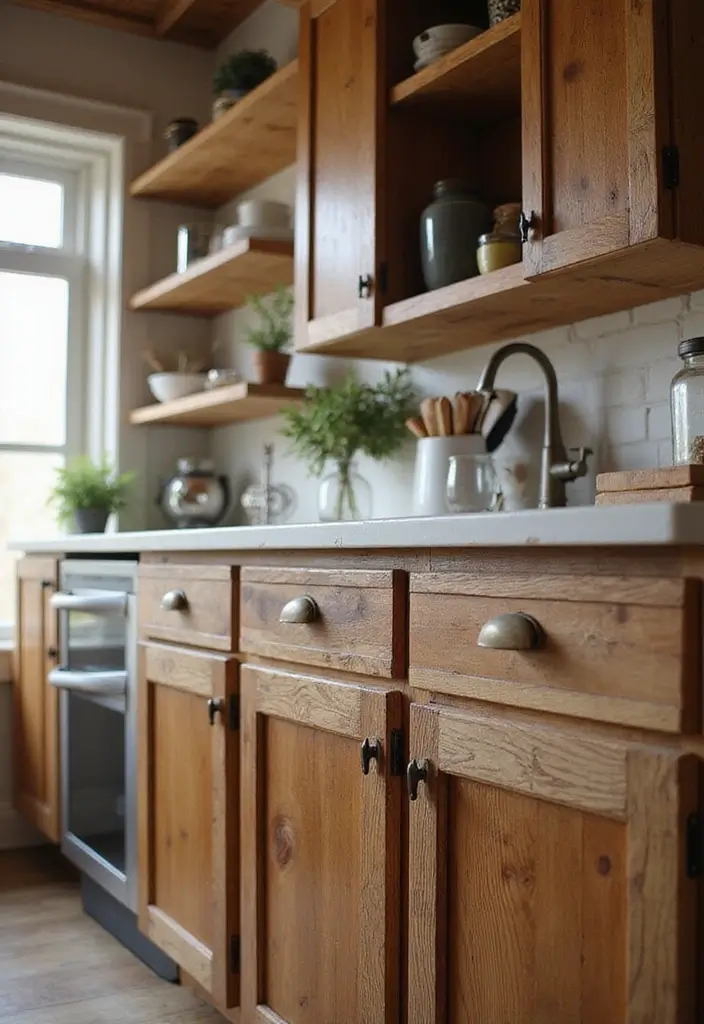
Nothing brings character to a kitchen quite like reclaimed wood cabinets.
These cabinets not only add warmth and rustic charm but are also a sustainable choice, as they repurpose materials that would otherwise go to waste. Consider mixing stained and natural finishes to create a visually striking contrast.
You can enhance the look by using open shelving with reclaimed wood for displaying dishware or decorative items, keeping the space airy. Adding vintage knobs or handles can further elevate the aesthetic.
Key Benefits:
– Eco-conscious and unique
– Adds personality to your kitchen
– Pairs beautifully with modern appliances
Tip: If you’re unsure about a full cabinet overhaul, try incorporating reclaimed wood accents, like a floating shelf or a kitchen island top.
Reclaimed wood cabinets are more than just a design choice; they tell a story. Embrace sustainability while adding warmth to your interior design kitchen – your space deserves character!
2. Energy-Efficient Appliances
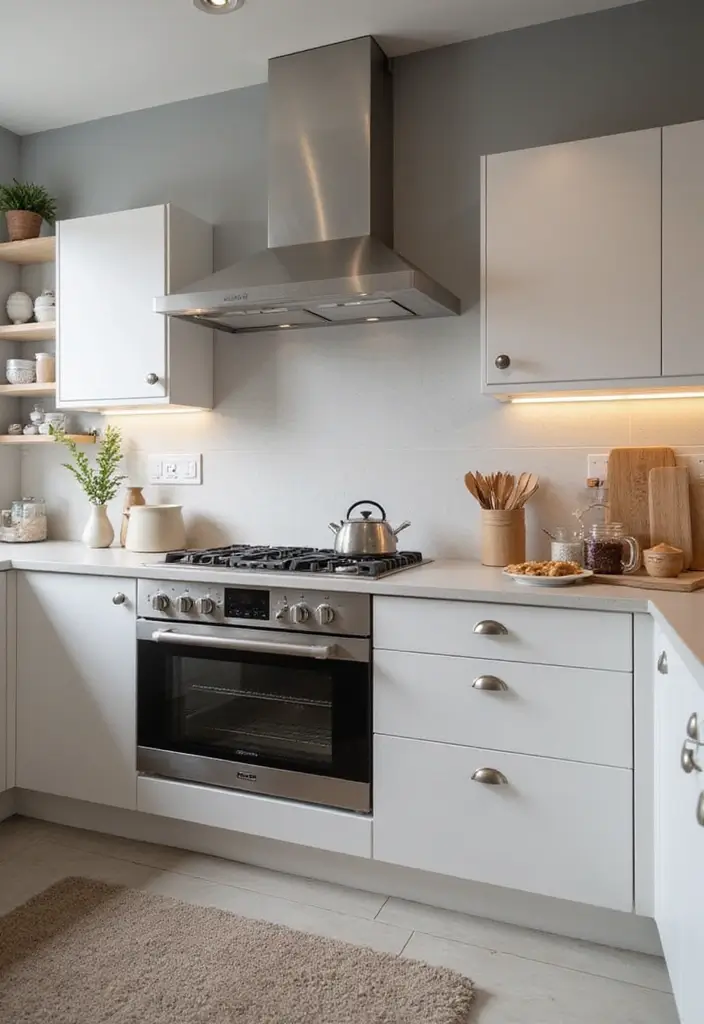
Upgrade your kitchen with energy-efficient appliances that save you money and reduce your carbon footprint.
Look for ENERGY STAR ratings when selecting refrigerators, dishwashers, and stoves. Modern designs do not compromise on aesthetics; they often come in sleek stainless steel or colorful finishes that can enhance your kitchen decor.
Furthermore, smart appliances can help you monitor energy usage, giving you control over your consumption. They also come with innovative features that make cooking easier and more enjoyable.
Considerations:
– Look for compact designs for small kitchen styling
– Choose appliances that complement your overall design theme
Tip: When planning your kitchen layout, keep in mind the flow of energy-efficient appliances to save time while cooking.
3. Sustainable Countertops
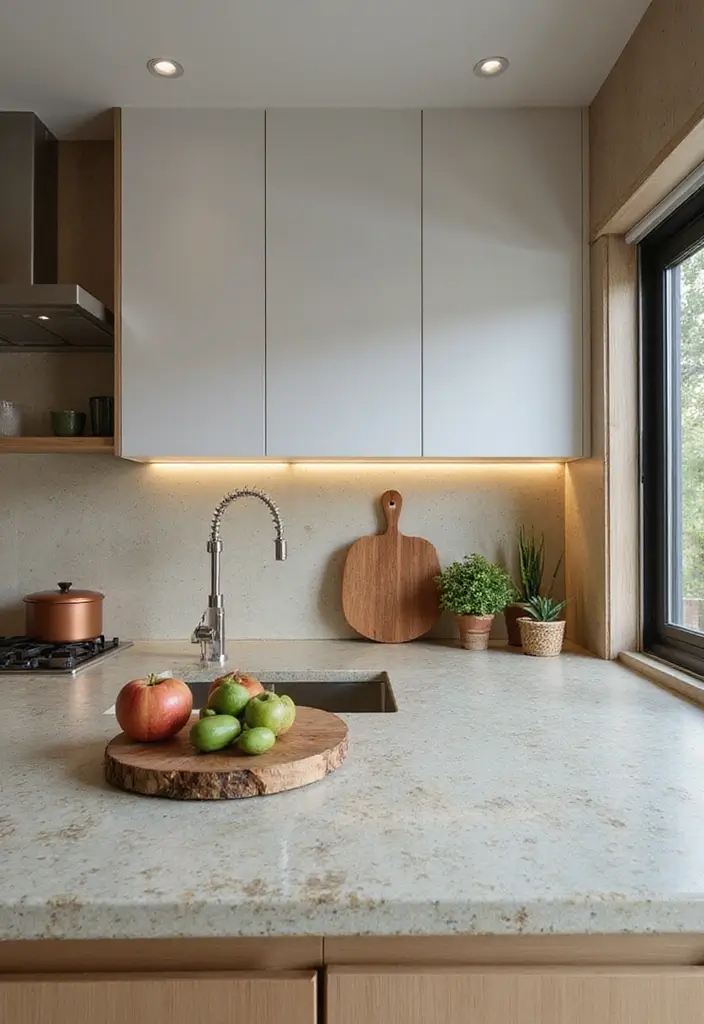
When selecting countertops, consider materials like bamboo, recycled glass, or even concrete.
Bamboo is a fast-growing grass that is durable and visually appealing, while recycled glass countertops provide a unique and colorful look. Concrete can be customized with various finishes and is incredibly long-lasting.
These sustainable options allow for creativity in your kitchen design, enabling you to choose colors and textures that align with your personal style.
Benefits:
– Environmentally friendly options available
– Durable and easy to maintain
– Unique aesthetics based on material choices
Tip: Pair your sustainable countertop with contrasting cabinetry to create a striking visual impact.
Sustainable countertops can be a stunning centerpiece in your kitchen. From the warmth of bamboo to the vibrant hues of recycled glass, choose materials that not only reflect your style but also care for our planet!
4. Indoor Herb Gardens
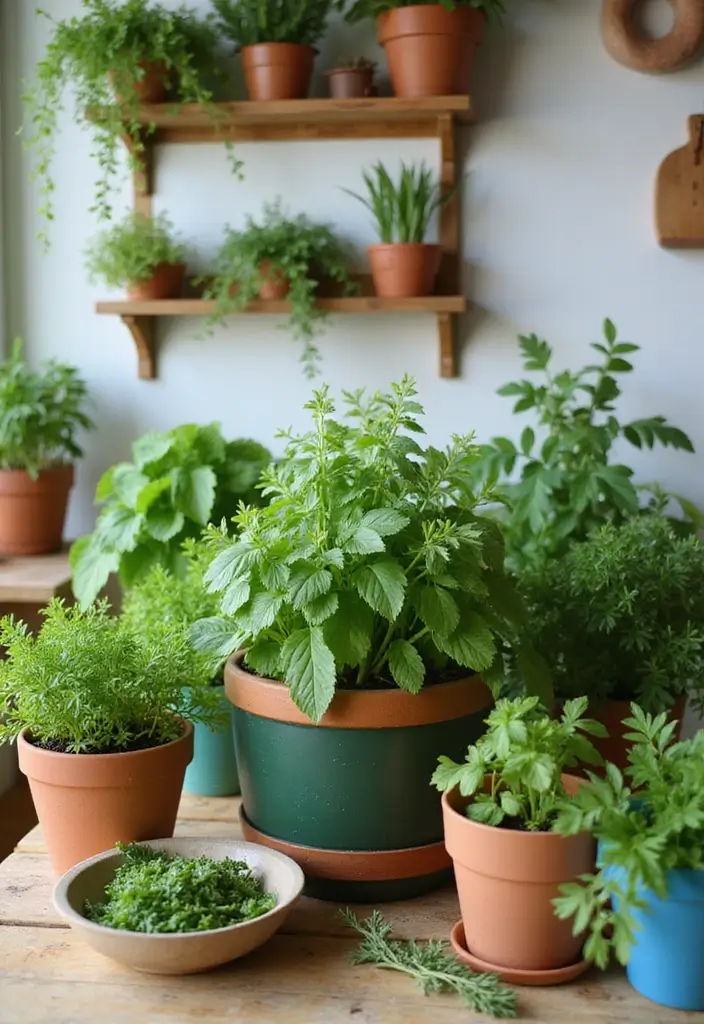
Bringing a touch of nature indoors not only enhances the kitchen’s aesthetic but also promotes sustainability.
Creating an indoor herb garden allows you to enjoy fresh ingredients while minimizing waste. Consider wall-mounted planters or a sunny windowsill for easy access. Herbs like basil, rosemary, and mint are not just practical; they add a vibrant pop of green to your kitchen decor.
Incorporating an herb garden can also improve air quality and provide a sense of calm in the heart of your home.
Tips:
– Use recycled containers for planting
– Mix herbs with flowers for added color
Trick: Regularly trim your herbs for culinary use to encourage new growth and keep your garden healthy.
5. Upcycled Furniture
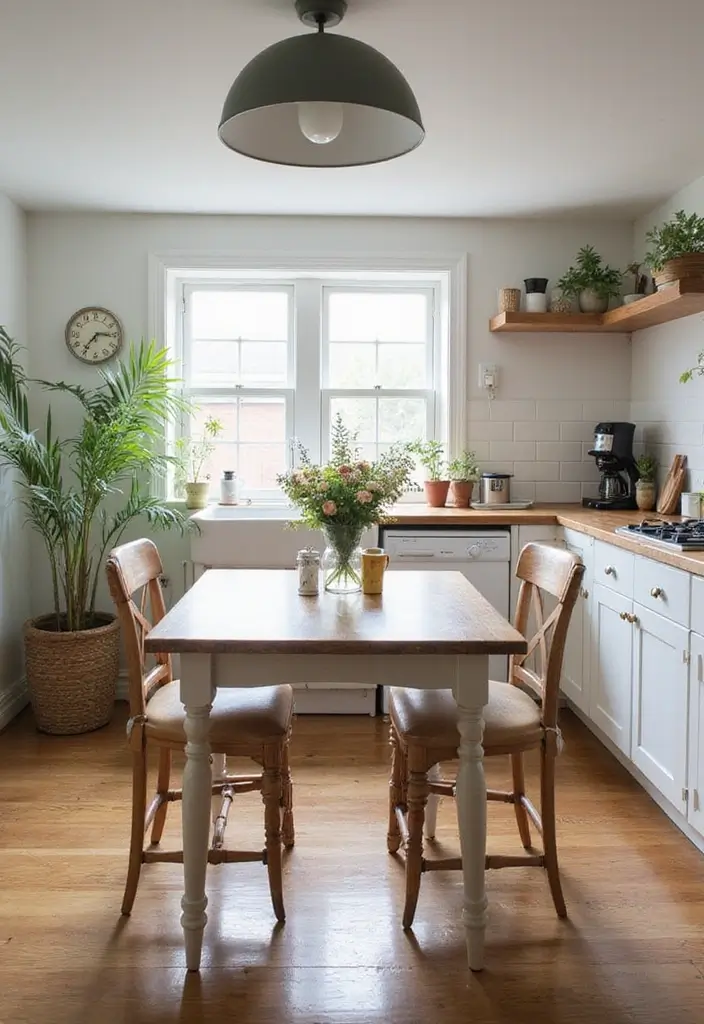
Got old kitchen furniture? Don’t toss it out! Upcycling is a fantastic way to breathe new life into your kitchen while being eco-friendly.
Transform an old table with a fresh coat of paint or new upholstery on chairs to match your modern kitchen design. You can also mix styles for a playful look; for example, pair a vintage farm table with sleek modern stools.
This trend not only cuts down on waste but also allows for a unique, personalized touch in your kitchen.
Benefits:
– Saves money on new furniture
– Adds character and personal stories to your space
– Encourages creativity in design
Tip: Ensure the materials used in upcycling are non-toxic and eco-friendly to maintain a healthy kitchen environment.
6. Natural Lighting
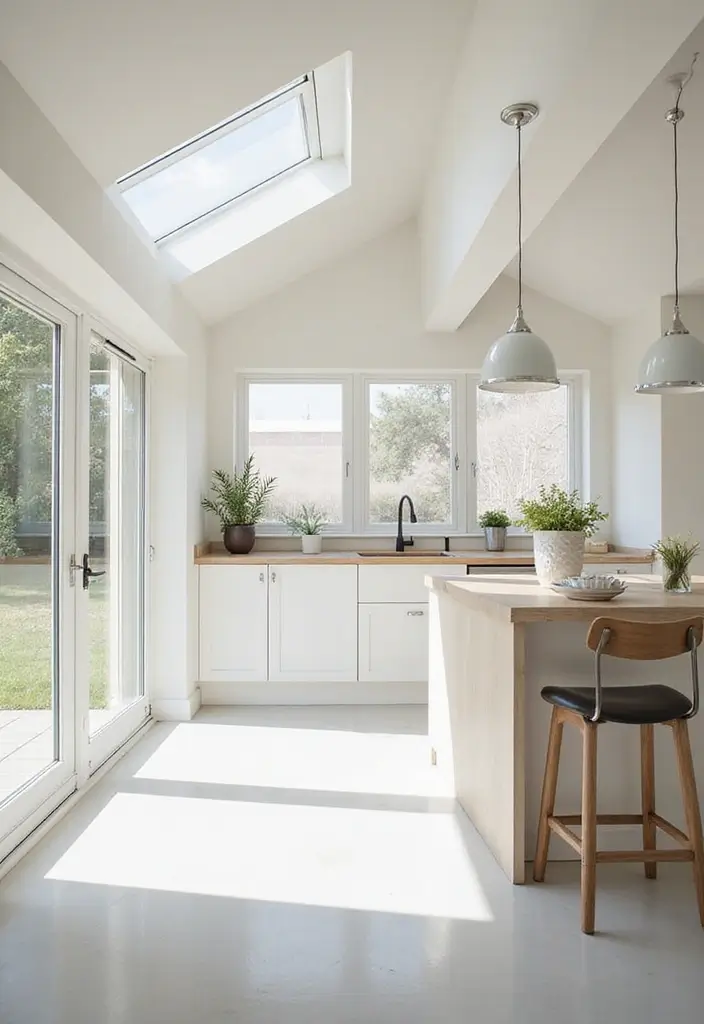
Natural light can completely transform your kitchen’s atmosphere.
Maximize sunlight by installing larger windows or opting for skylights if possible. Natural light not only makes the space feel bigger but also reduces the need for artificial lighting during the day, saving energy.
Using sheer curtains can maintain privacy without sacrificing light. Complement your natural lighting with light-colored cabinetry and reflective surfaces to enhance brightness.
Advantages:
– Reduces energy consumption
– Creates a more inviting and uplifting environment
– Enhances colors and textures in your kitchen design
Tip: Position your dining area near windows to create a welcoming space for meals and family gatherings.
7. Eco-Friendly Paints
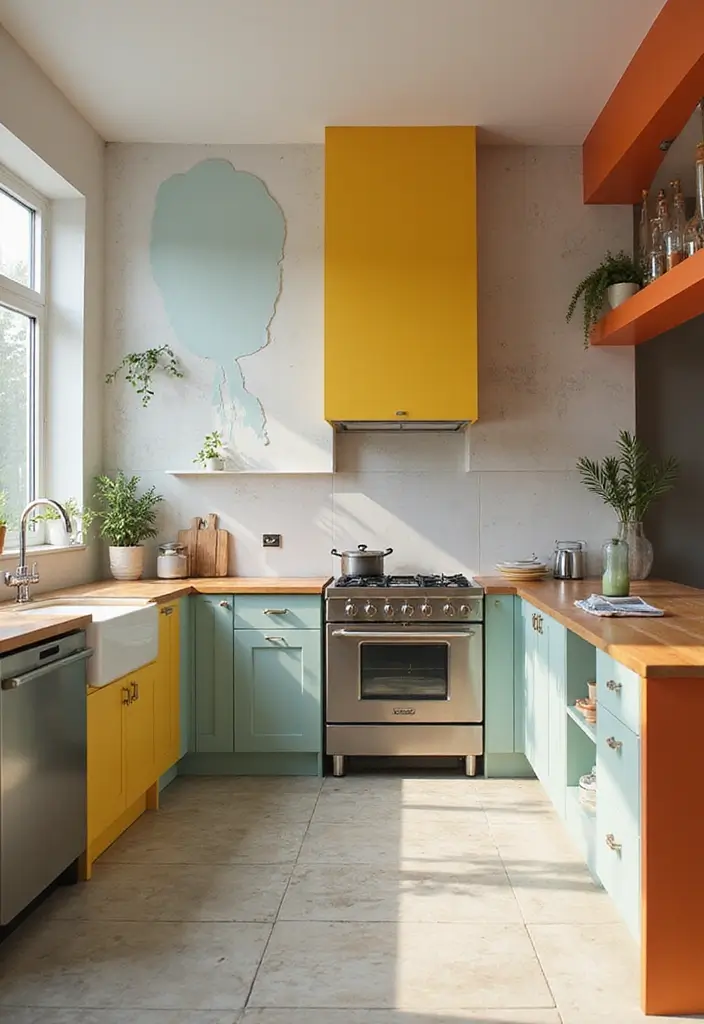
Choosing eco-friendly paints for your kitchen can drastically reduce the number of harmful chemicals in your home.
Look for low-VOC and zero-VOC options that are safe for indoor air quality. These paints come in a variety of stunning colors, ensuring you don’t have to compromise on aesthetics.
Consider softer hues to create a calming environment or bold colors for a statement wall that energizes the space. Additionally, using paint can be a cost-effective way to refresh your kitchen without a complete overhaul.
Benefits:
– Improved indoor air quality
– Variety of colors available
– Easy and affordable refresh option
Tip: Test a small area first to see how the color looks in different lighting before committing to a full paint job.
8. Bamboo Flooring
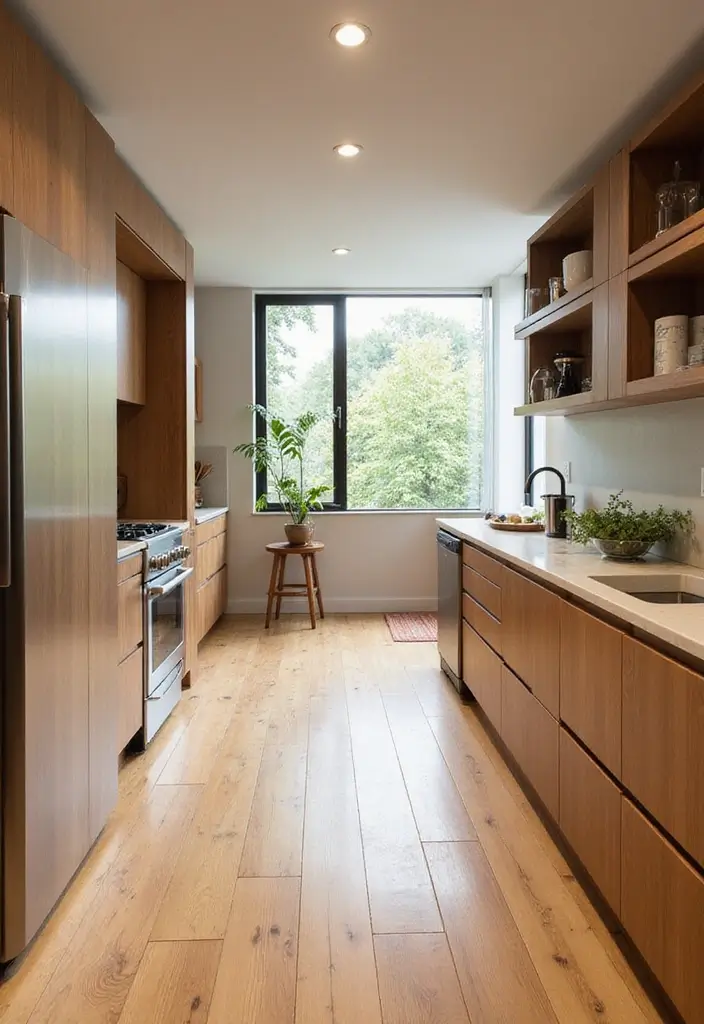
If you’re considering new flooring, bamboo is a gorgeous and sustainable choice.
It’s not only environmentally friendly but also highly durable and easy to maintain. Bamboo has natural antibacterial properties, making it an excellent option for kitchens where hygiene is a priority.
Its light color can help brighten up the space, and it pairs well with various designs, from modern minimalist to rustic farmhouse styles.
Advantages:
– Fast-growing and renewable resource
– Unique and elegant appearance
– Easy to clean and maintain
Tip: Use area rugs to add warmth and define spaces, particularly in open-concept kitchens.
Bamboo flooring is more than just beautiful; it’s a sustainable superstar! Durable and easy to maintain, it brings warmth and hygiene to your kitchen – because every home deserves a healthy touch.
9. Smart Waste Systems
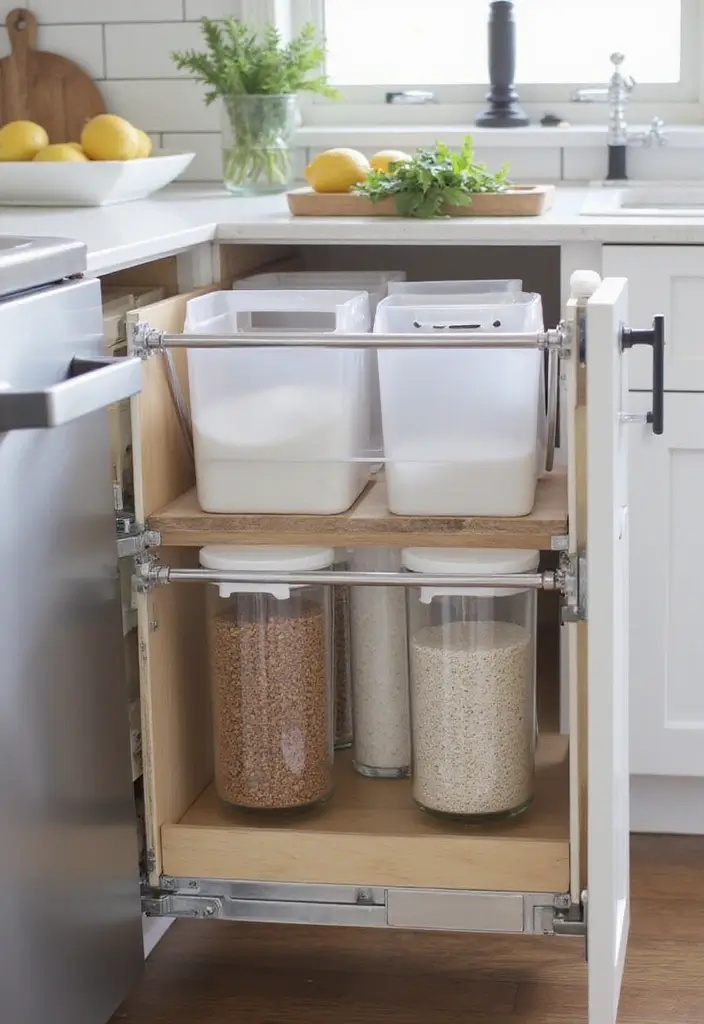
Efficient waste management is key to an eco-friendly kitchen.
Implementing a smart waste system allows you to easily recycle and compost. Look for pull-out bins or labeled compartments that fit seamlessly into cabinetry, making waste sorting simple and stylish.
This innovation not only helps the environment but can also enhance your kitchen’s organization and aesthetic. Some systems even come with technology to monitor waste levels, helping you manage space better.
Benefits:
– Encourages sustainable habits
– Keeps your kitchen tidy and organized
– Seamless integration into your design
Tip: Utilize transparent containers for easy visibility, making the recycling process more straightforward.
10. Vintage Accents
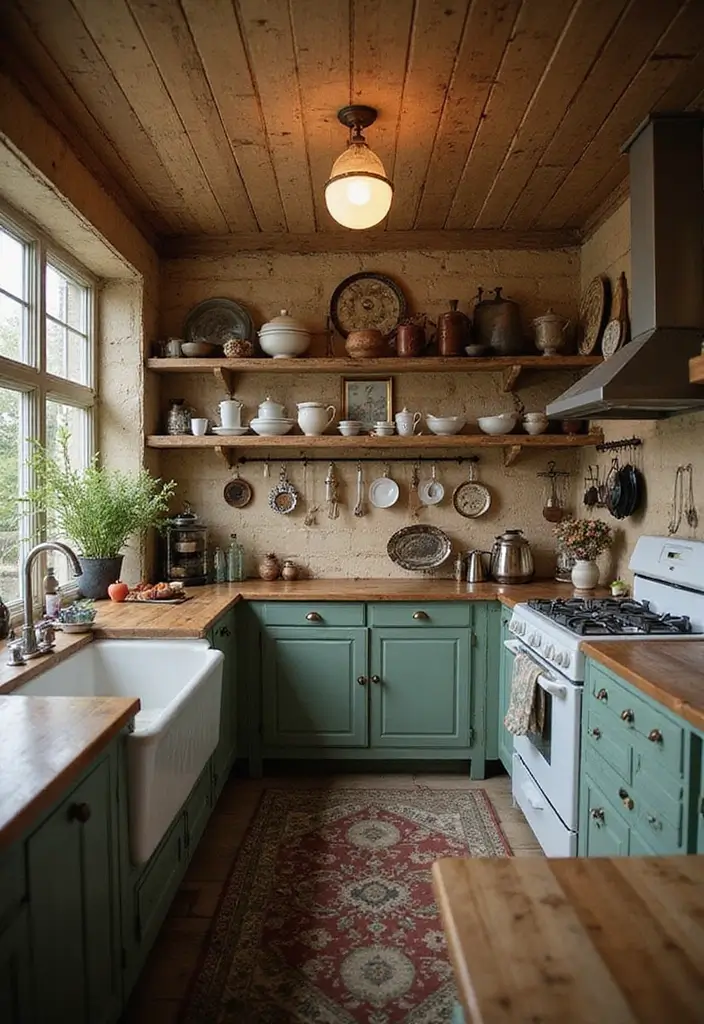
Incorporating vintage accents can add charm and character to your kitchen.
Look for antique dishware, retro lighting fixtures, or vintage finds that reflect your personality. Not only does this add a personal touch, but it also promotes sustainability by reusing existing items instead of buying new.
Pairing vintage elements with modern appliances can create an interesting juxtaposition. Think about including an old-fashioned scale or a retro-inspired backsplash as a focal point.
Benefits:
– Unique and personal aesthetic
– Supports sustainable practices
– Can often be found at lower prices than new items
Tip: Mix and match vintage pieces with modern decor for a balanced yet eclectic look.
11. Minimalist Design
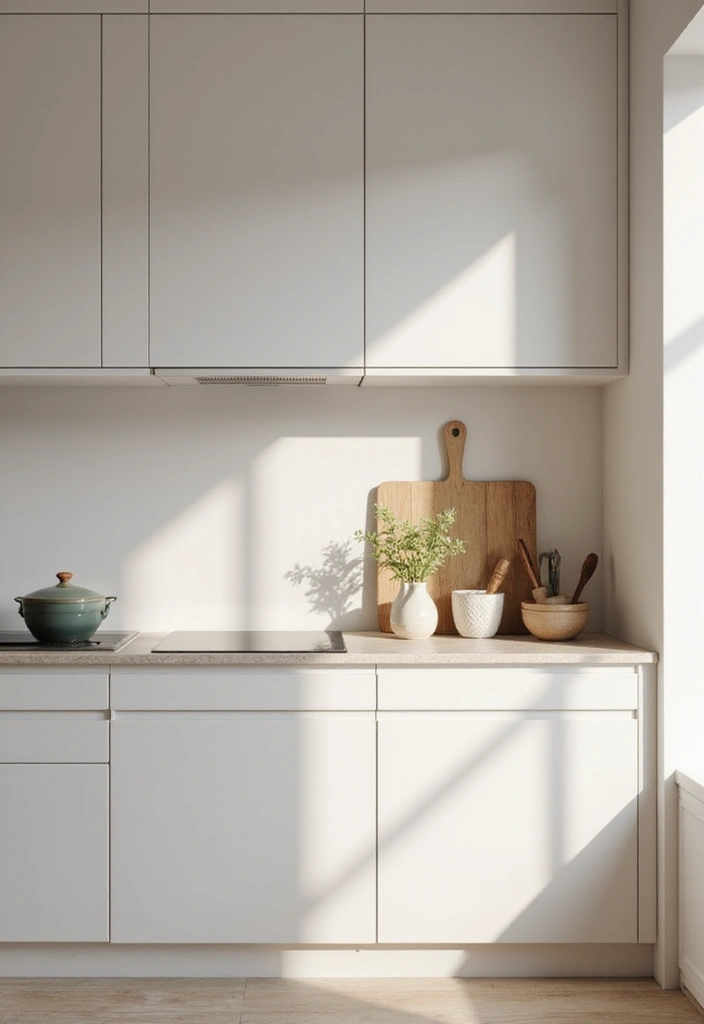
Sometimes less is more, especially in a kitchen setting! Minimalist designs emphasize function and simplicity.
Opt for sleek cabinetry, clutter-free countertops, and a limited color palette to create an open and airy feel. This helps maintain a clean and serene environment, which is essential for a space where food is prepared.
Utilize hidden storage solutions to keep everything organized and avoid countertop chaos. Subtle textures, like wood grains or matte finishes, can add depth without overwhelming the space.
Key Insights:
– Prioritize quality over quantity
– Use multi-functional items to reduce clutter
Tip: Regularly declutter to maintain the minimalist aesthetic and ensure your kitchen remains a peaceful place.
12. Nature-Inspired Color Schemes
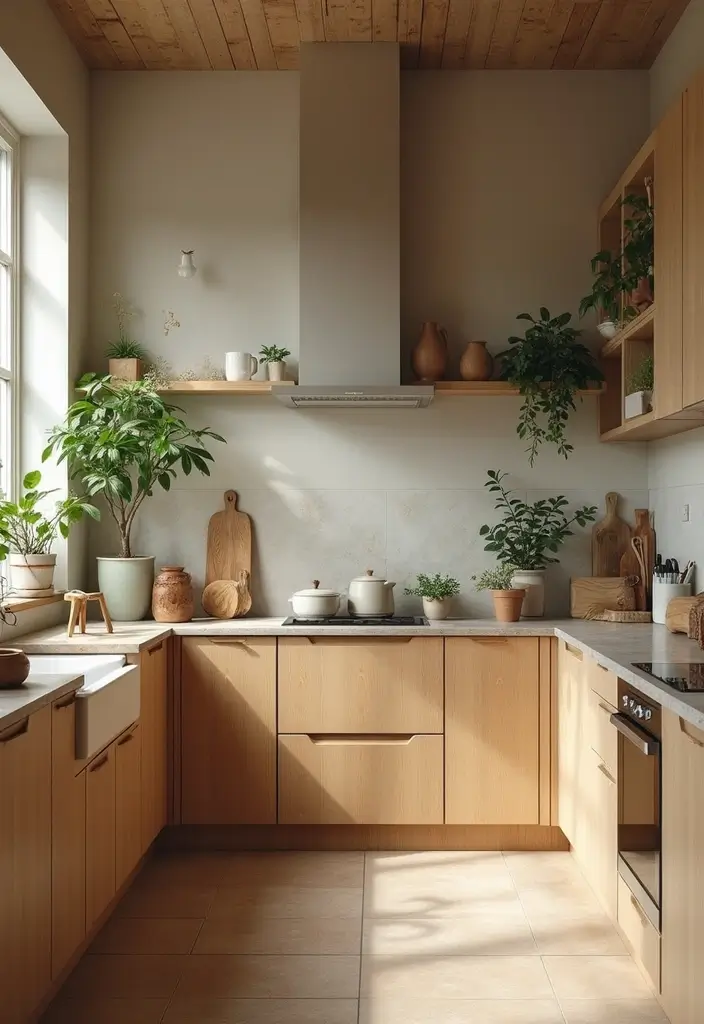
Bring the beauty of the outdoors inside with nature-inspired color schemes.
Choosing earthy tones like greens, browns, and muted blues can create a calming kitchen environment. These colors can evoke a sense of tranquility and connection to nature. Pair these shades with natural textures, such as wood and stone, to enhance the organic feel.
Accent your color palette with plants or natural elements to further integrate the theme. This approach not only makes your kitchen feel inviting but also aligns with sustainable living.
Considerations:
– Use lighter shades to make smaller spaces feel larger
– Balance bold colors with neutral elements
Tip: Utilize paint, textiles, and accessories to incorporate these colors into your design.
13. Open Shelving
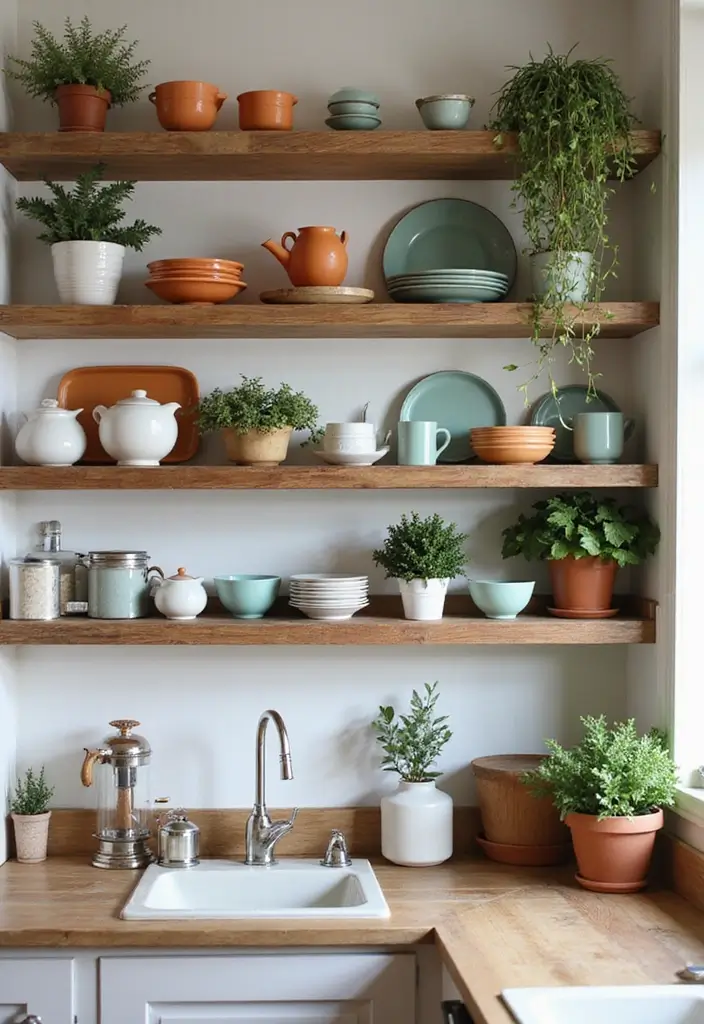
Open shelving can make your kitchen feel larger and more welcoming while showcasing your favorite dishes and decor.
This trend encourages you to curate a collection of beautiful items, from colorful plates to potted herbs. When styled thoughtfully, open shelves can serve as eye-catching focal points in your kitchen.
Choose sustainable materials like reclaimed wood or bamboo for the shelves to stay in line with eco-friendly principles. Remember that open shelving requires a bit more maintenance, so be prepared to keep items neatly arranged and dust-free.
Benefits:
– Creates an airy feel in the kitchen
– Allows for personalization and creativity
– Makes frequently used items easily accessible
Tip: Use baskets or decorative boxes on shelves for added organization.
14. Sustainable Lighting Fixtures
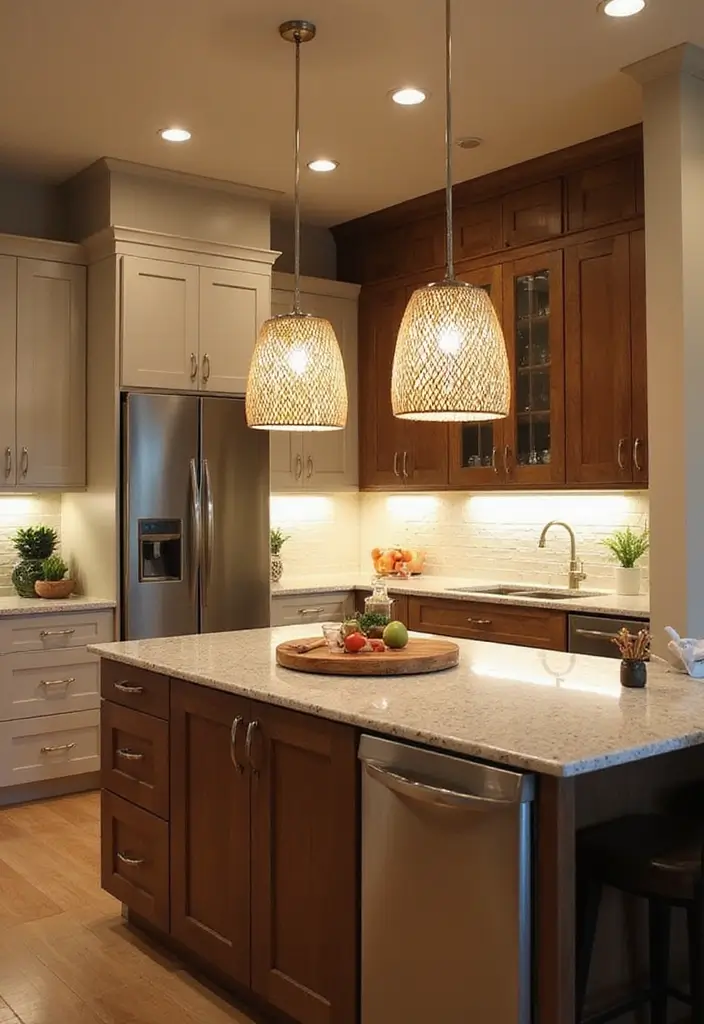
Lighting can set the mood and style of your kitchen, so choose fixtures that are not only beautiful but also energy-efficient.
Look for LED options or fixtures made from sustainable materials like bamboo or recycled metal. Pendant lights can add a stylish touch over islands or dining areas, while under-cabinet lighting can enhance functionality.
Choose designs that reflect your kitchen’s overall style, whether it’s modern, rustic, or a blend of both. Sustainable lighting helps reduce energy consumption while illuminating your space beautifully.
Key Highlights:
– Energy-efficient options available
– Diverse styles to match your decor
Tip: Layer lighting for versatility; combine ambient, task, and accent lighting to achieve the perfect balance.
15. Water-Saving Fixtures
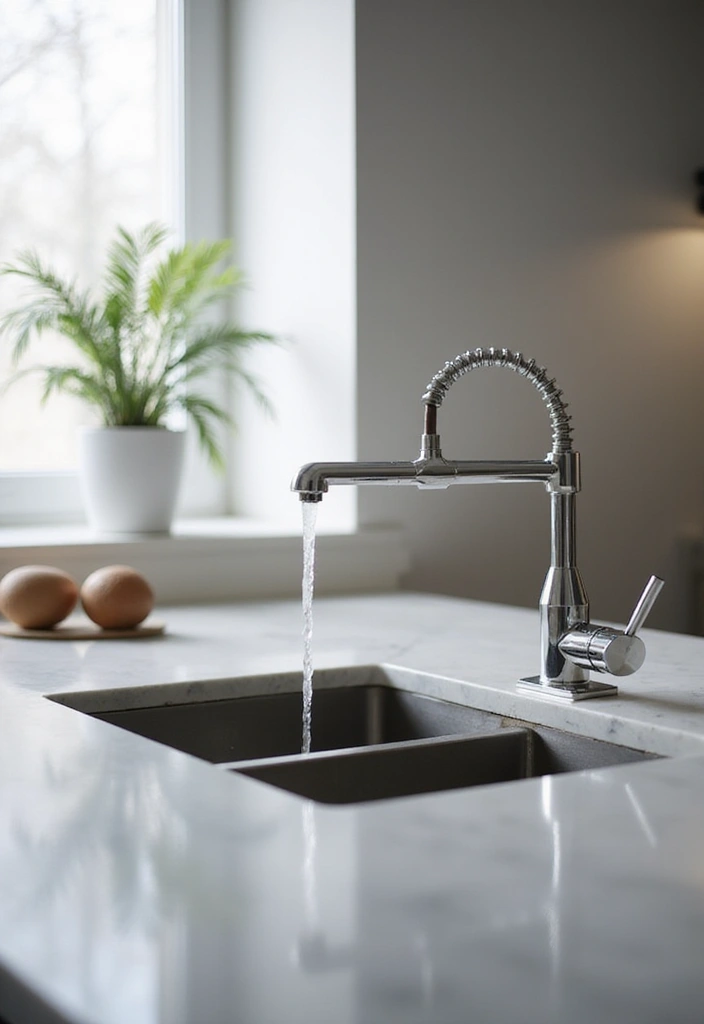
Take eco-friendliness to the next level with water-saving fixtures in your kitchen.
Low-flow faucets and aerators can help reduce water usage significantly without sacrificing performance. Opt for touchless models that add convenience while also being efficient. This small change can have a big impact on both your water bill and the environment.
Additionally, consider incorporating a dual-flush toilet in the nearby restroom or a water-efficient dishwasher to maximize your kitchen’s sustainability.
Advantages:
– Saves water and reduces utilities
– Offers modern, convenient designs
Tip: Regularly check for leaks to ensure maximum efficiency.
16. Eco-Friendly Backsplashes
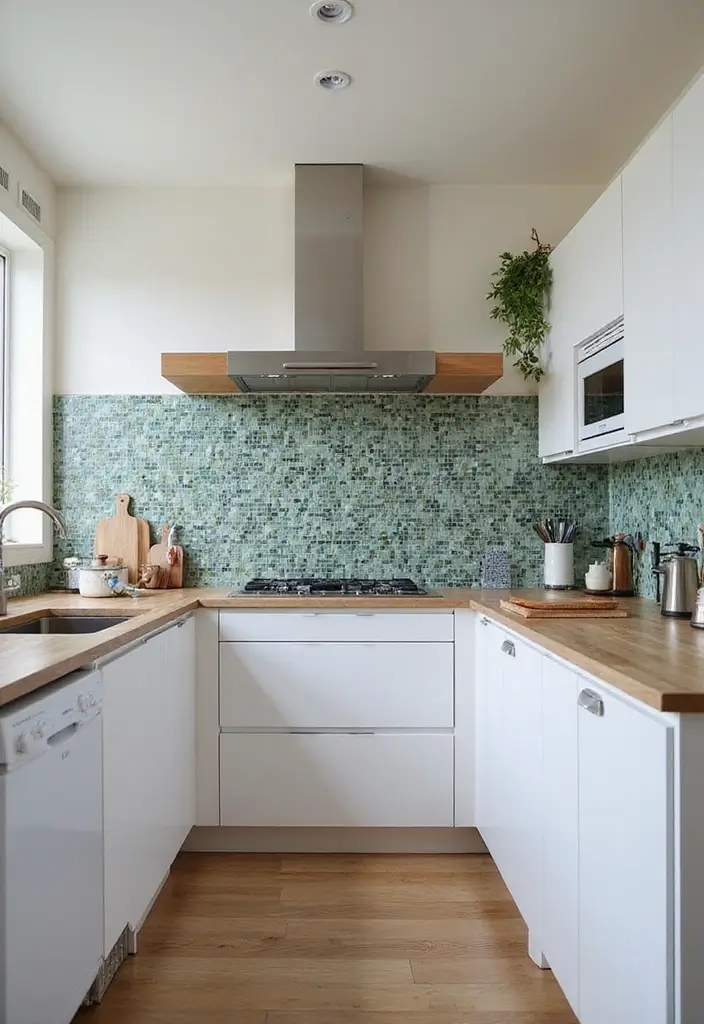
Add personality to your kitchen while keeping it eco-friendly with sustainable backsplashes.
Consider materials like recycled tiles, glass, or even reclaimed wood. These options not only look great but also help reduce waste in landfills. The versatility of these materials allows for a variety of styles, from sleek modern to rustic charm.
Using a bold backsplash can also create a stunning focal point without overwhelming the rest of your kitchen design.
Benefits:
– Unique and stylish options available
– Durable and easy to clean
Tip: Incorporate different textures or colors to create depth and interest in the backsplash area.
17. Smart Storage Solutions
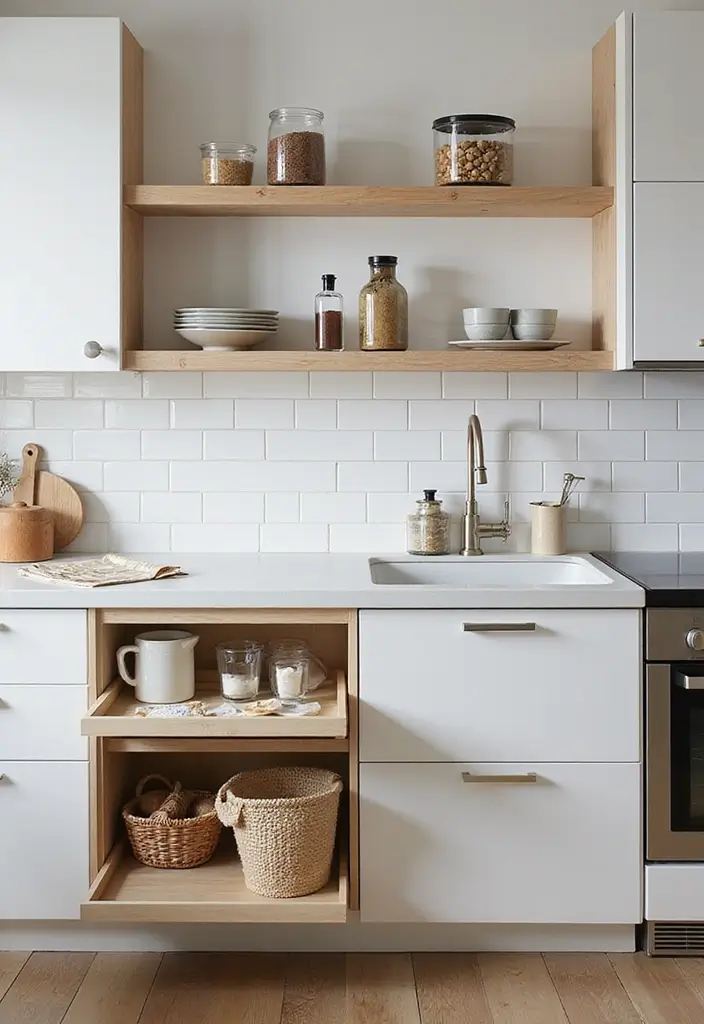
Maximize your kitchen’s efficiency with smart storage solutions.
From pull-out pantry shelves to corner cabinets that make the most of every inch, innovative storage can transform your kitchen, especially if space is limited. Incorporate organizers within drawers to keep utensils and tools in order.
Consider using eco-friendly materials like bamboo for drawer dividers and containers, aligning with your sustainable goals. A well-organized space not only looks better but also enhances functionality, making cooking and cleanup a breeze.
Advantages:
– Increases efficiency in small kitchens
– Reduces clutter for a clean look
Tip: Regularly assess your storage to ensure it meets your cooking needs, adjusting as necessary.
18. Colorful Accents
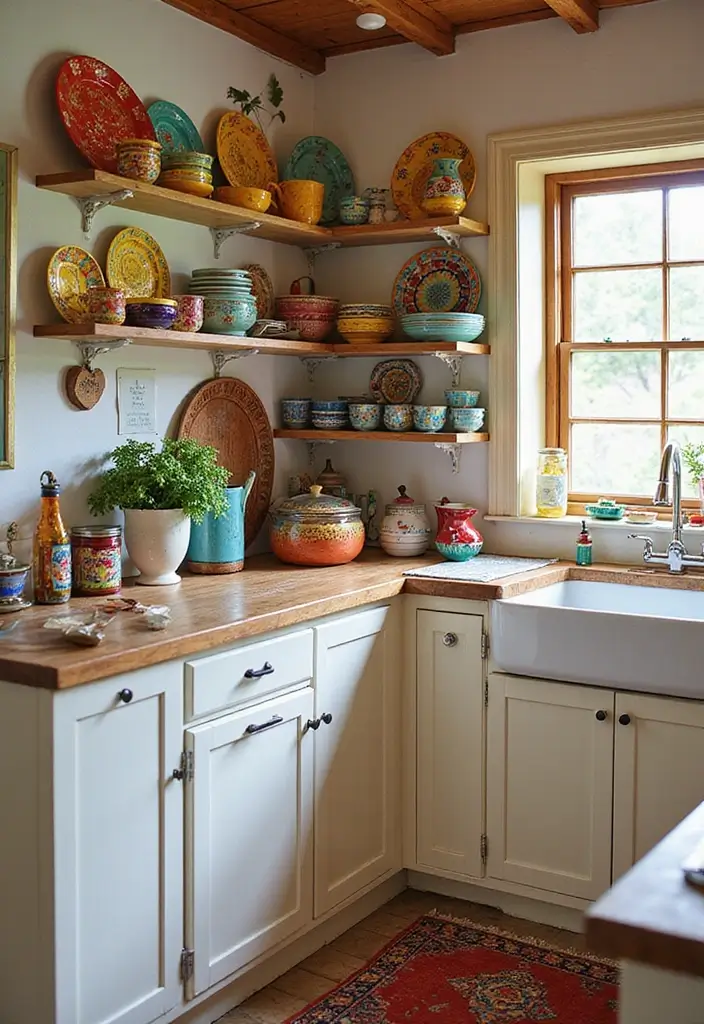
Inject some personality into your kitchen with colorful accents!
Whether it’s vibrant dishware, bright utensils, or bold textiles, splashes of color can liven up even the most neutral kitchens. Use eco-friendly fabrics for curtains and cushions to keep the focus on sustainability.
Consider a colorful backsplash or a painted island as a focal point while keeping larger components in neutral tones. This allows for flexibility in style, making it easy to refresh your kitchen decor when you feel like a change.
Benefits:
– Offers an easy way to personalize your space
– Can match seasonal themes or special occasions
Tip: Stick to a coordinated color palette for a more cohesive look, mixing and matching to keep it interesting.
19. Multi-Functional Islands
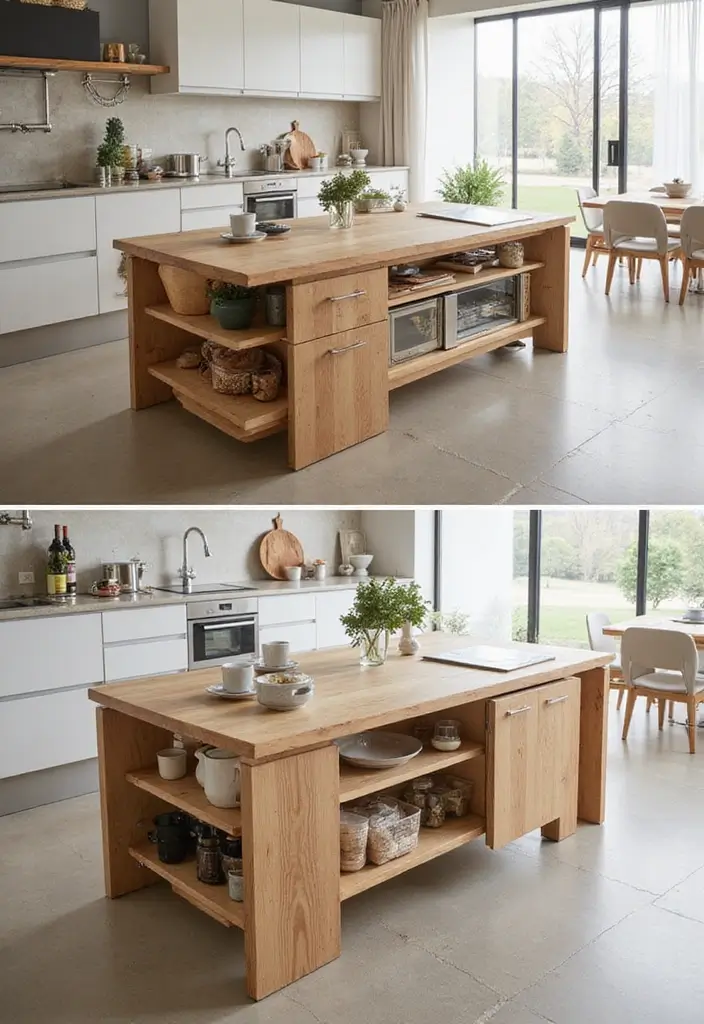
Kitchen islands can be game-changers, especially when designed with sustainability in mind.
Opt for islands that serve multiple purposes, like additional prep space, dining, and storage. You can use reclaimed wood or eco-friendly materials to construct your island, tying into your overall kitchen theme.
Adding wheels allows for flexibility in layout, making it easy to rearrange the space when needed. This multi-functionality makes the island the core of the kitchen, ideal for cooking, entertaining, or just enjoying a meal.
Advantages:
– Maximizes available space
– Provides a social gathering area
Tip: Utilize the area beneath the island for storage – think baskets or shelves to keep essentials nearby.
A multi-functional kitchen island isn’t just a trend—it’s the heart of a sustainable home! With reclaimed materials and flexible designs, you can cook, dine, and create all in one beautiful space.
20. Stylish Dishware Displays
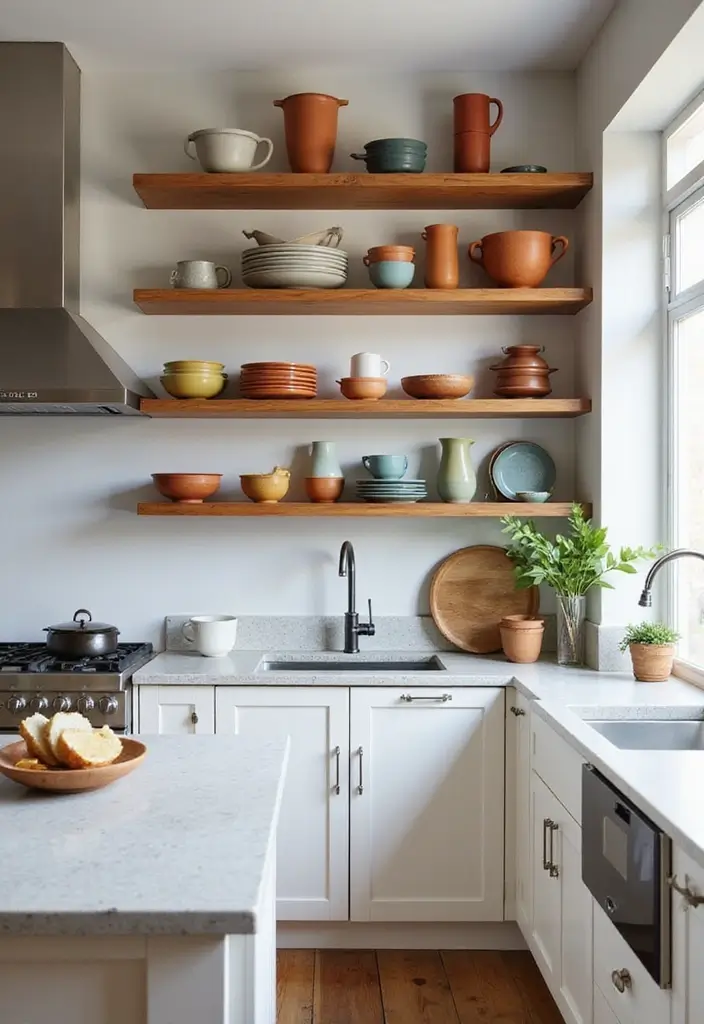
Showcasing your beautiful dishware can elevate your kitchen’s aesthetic.
Consider open shelving, glass-front cabinets, or even decorative pegboards for displaying your favorite pieces. This adds both character and function, allowing easy access to your dishware while creating a visually appealing focal point.
Opt for eco-friendly dishware made from sustainable materials like bamboo, which can also contribute to your kitchen decor. This trend not only enhances your kitchen’s style but also encourages you to use and enjoy your favorite pieces daily.
Benefits:
– Adds personality to your kitchen
– Encourages sustainable choices
Tip: Mix and match different styles and colors to create a curated display that reflects your taste.
21. Gorgeous Tile Patterns
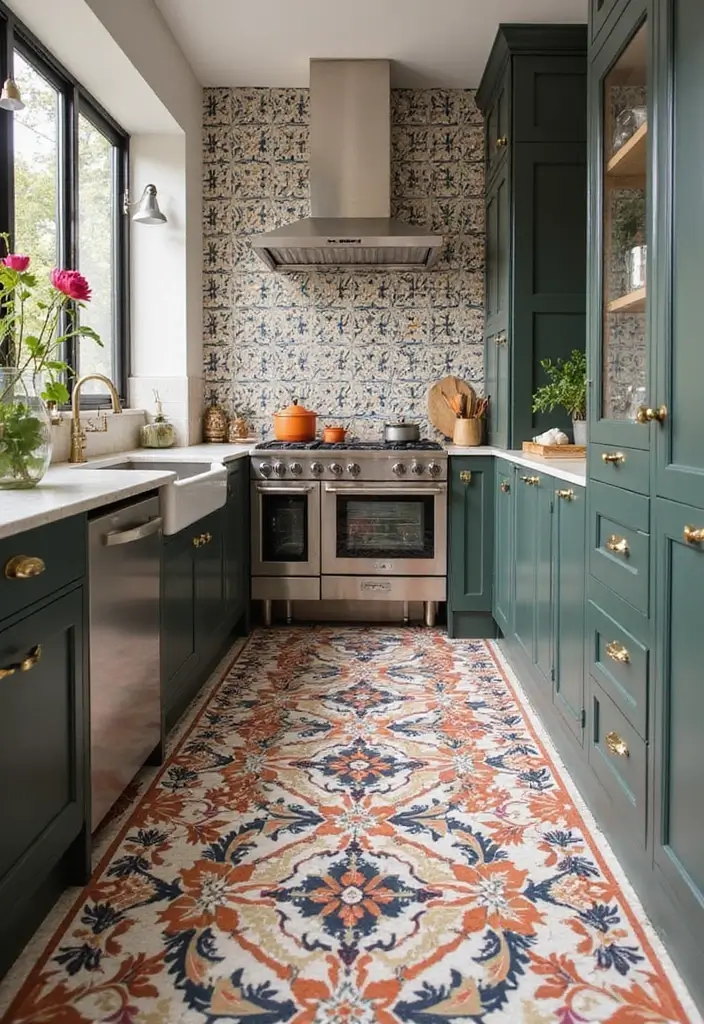
Make a statement with gorgeous tile patterns in your kitchen, whether on the floor or as a backsplash.
Consider eco-friendly tiles made from recycled materials that offer stunning designs while promoting sustainability. Geometric patterns or bold colors can create a captivating focal point, making your kitchen unforgettable.
Mixing and matching different tile shapes or colors can create a unique look, allowing for creativity in your design. Tiles are also easy to clean, making them a practical choice for a busy kitchen area.
Advantages:
– Variety of designs available
– Durable and long-lasting
Tip: Use contrasting grout colors to accentuate your tile patterns, adding depth and interest.
22. Textured Fabrics
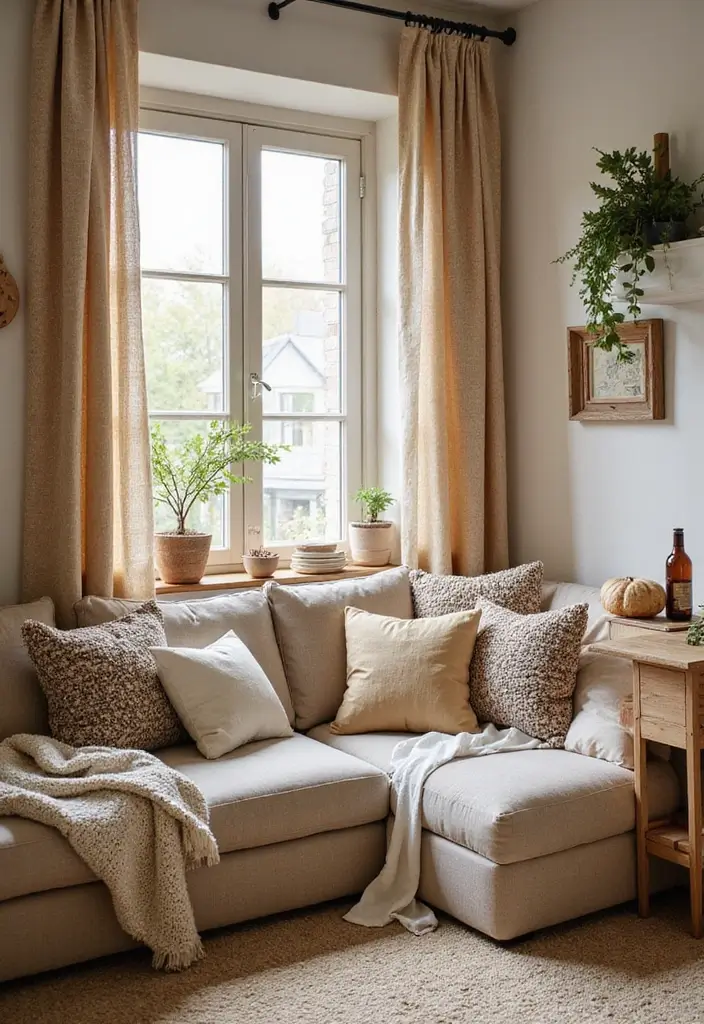
Incorporate textured fabrics into your kitchen for an inviting and cozy vibe.
Consider eco-friendly options for curtains, cushions, or table linens that add warmth and style. Natural fibers like cotton, linen, or wool can bring an element of comfort and softness to the space. Use patterns and colors that complement your kitchen decor, tying the whole look together.
Textures can contrast beautifully with hard surfaces like wood and metal, creating an inviting balance.
Benefits:
– Adds warmth and personality
– Eco-friendly options available
Tip: Layer different textures to create depth, such as mixing a rough burlap table runner with soft cotton napkins.
23. Stylish Cookware Displays
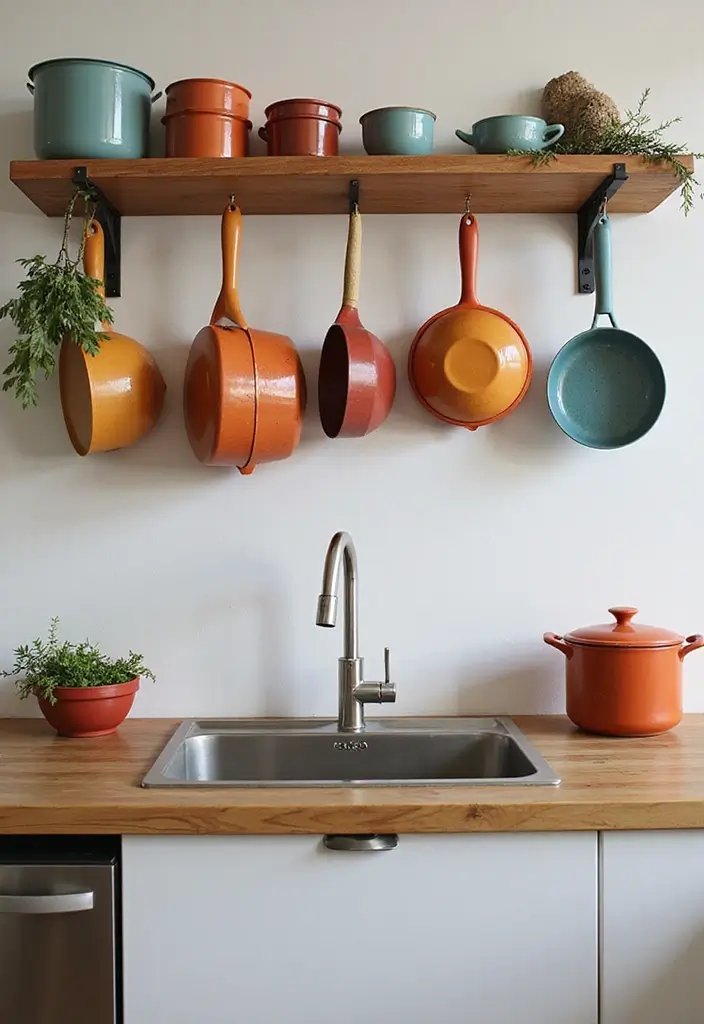
Your cookware can be a beautiful addition to your kitchen decor!
Consider hanging pots and pans from a rack or displaying colorful cookware on shelves. This not only keeps your kitchen organized but also allows you to show off your style. Look for eco-friendly cookware made from sustainable materials that are both functional and attractive.
Incorporating cookware displays into your decor helps to create a lived-in feel while also making cooking essentials easily accessible.
Advantages:
– Enhances organization and accessibility
– Adds color and personality
Tip: Group cookware by color or material for a cohesive display that enhances the overall kitchen design.
24. Integrated Technology
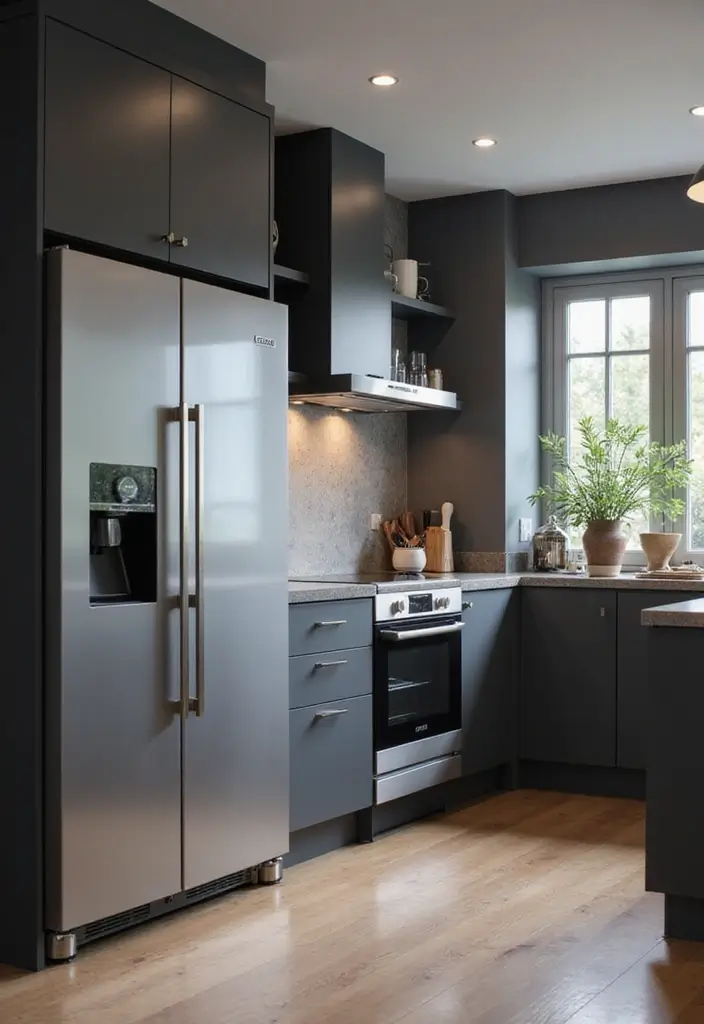
Embrace the future with integrated technology in your kitchen for a modern and functional space.
From smart fridges that help you manage groceries to touch-activated faucets, technology can enhance your cooking experience while promoting efficiency. Many appliances now come with energy-saving features, ensuring they’re eco-friendly.
Additionally, consider implementing voice-controlled systems for lighting or music, making your kitchen a delightful place to cook and entertain.
Advantages:
– Enhances convenience and efficiency
– Promotes sustainability through energy-saving features
Tip: Always opt for user-friendly and reliable technology to ensure a seamless experience.
25. Sustainable Cookware
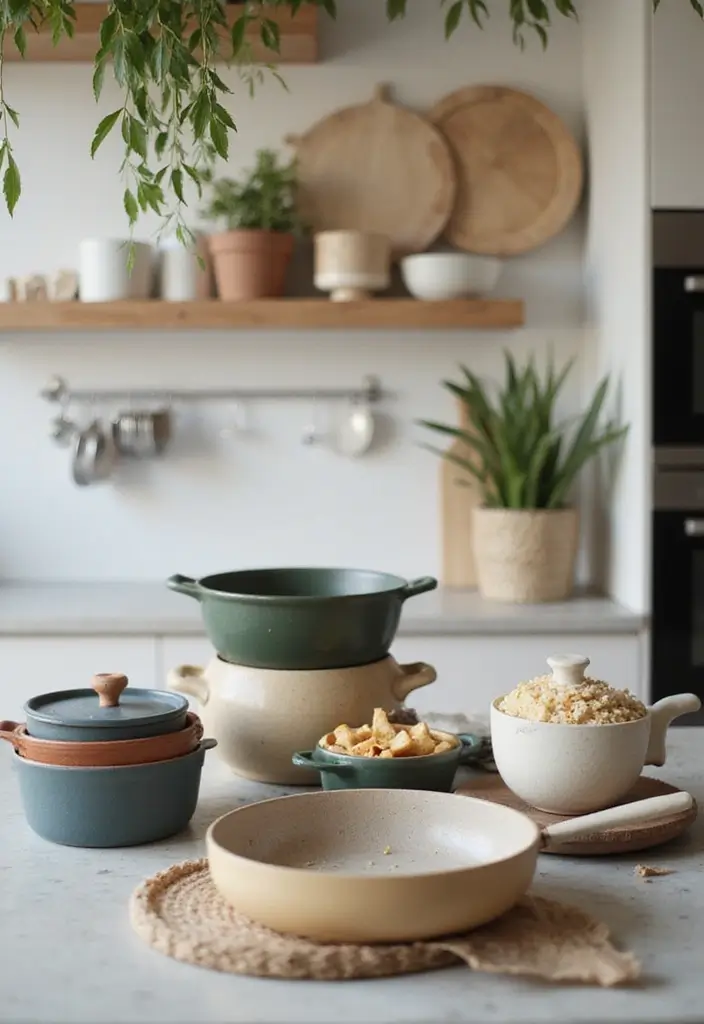
Investing in sustainable cookware is a great step toward eco-friendly living.
Look for pots and pans made from recycled materials, like stainless steel or cast iron, which are both durable and efficient. Non-toxic, natural coatings can also be found that eliminate harmful chemicals. These options not only ensure safer cooking but also often have longer lifespans than their non-sustainable counterparts.
Display beautiful cookware as part of your kitchen decor to inspire others to make similar choices.
Benefits:
– Healthier cooking options
– Durable and long-lasting
Tip: Regularly maintain your cookware to ensure it lasts and performs well over time, keeping your kitchen eco-friendly.
Conclusion
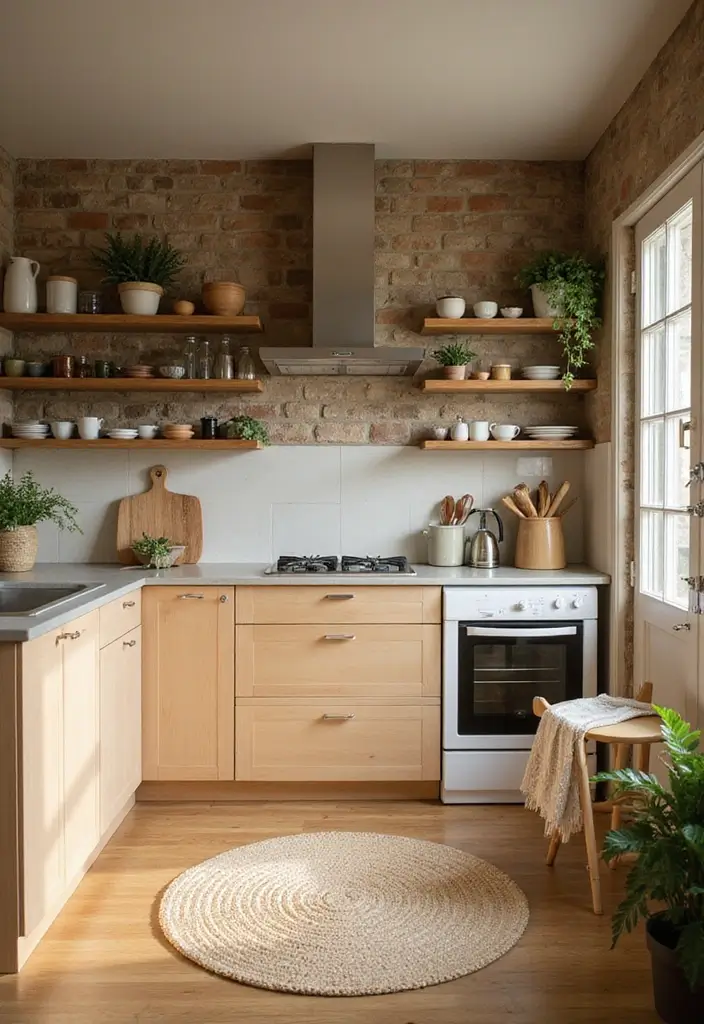
Revamping your kitchen with sustainable and eco-friendly designs not only benefits the environment but can also elevate your home decor.
By incorporating these 25 inspiring ideas, you can create a beautiful space that reflects your style and values.
Let your kitchen be a testament to your commitment to sustainability, all while enjoying a welcoming and functional heart of the home.
Frequently Asked Questions
What are some eco-friendly materials I can use for kitchen countertops?
When selecting sustainable countertops, consider materials like bamboo, recycled glass, or concrete. Bamboo is a fast-growing grass that is both durable and visually appealing, while recycled glass offers a unique and stylish touch to your kitchen. These eco-friendly choices not only enhance your kitchen decor but also promote sustainability!
How can I incorporate energy-efficient appliances into my kitchen design?
Upgrading to energy-efficient appliances is a fantastic way to reduce your carbon footprint and save on utility bills. Look for items with the ENERGY STAR label, which indicates that they meet energy efficiency guidelines set by the U.S. Environmental Protection Agency. Modern models not only perform better but often come in stylish designs that suit any kitchen decor!
What are some budget-friendly ideas for a small kitchen makeover?
Transforming a small kitchen doesn’t have to break the bank! Consider using upcycled furniture for a unique touch, or opt for open shelving to create an illusion of space. Adding natural lighting through larger windows or mirrors can also brighten the area. These budget-friendly ideas allow you to achieve a stunning kitchen without the hefty price tag!
How can I create a farmhouse-inspired kitchen on a budget?
To achieve that charming farmhouse kitchen inspiration without overspending, focus on using reclaimed wood for cabinets or decorative accents. Incorporate vintage elements like antique dishware and rustic light fixtures. Don’t forget to use a neutral color palette with earthy tones to enhance the cozy, welcoming vibe that farmhouse designs are known for!
What color schemes work best for eco-friendly kitchen designs?
For an eco-friendly kitchen, consider nature-inspired color schemes that include earthy tones like greens, browns, and muted blues. These colors create a calming and inviting atmosphere, making your kitchen feel like a natural extension of your home. Pair these shades with sustainable materials to enhance both aesthetics and environmental consciousness!
Related Topics
interior design
kitchen decor
sustainable living
modern kitchen
farmhouse style
small kitchen
eco-friendly ideas
minimalist design
color schemes
upcycling
energy-efficient appliances
indoor herb garden
